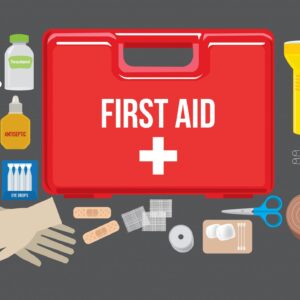In industrial settings, incidents—whether minor equipment failures or major safety events—can have significant consequences. To prevent recurrence, it’s crucial to understand not just what happened, but why it happened. This is where cause and effect checklists become invaluable tools in incident analysis.
These structured checklists help safety professionals and maintenance teams dig deeper into the root causes behind failures or accidents, leading to more effective corrective actions.
What Is a Cause and Effect Checklist?
A cause and effect checklist is a systematic list of potential factors that can contribute to an incident. It guides investigators through a range of possible causes—mechanical, human, procedural, or environmental—to ensure no critical detail is overlooked during the analysis.
Think of it as a practical extension of root cause analysis (RCA) techniques like the 5 Whys or fishbone (Ishikawa) diagrams, but more focused on verifying known categories of issues in a structured format.
Why Use a Cause and Effect Checklist?
✅ Ensures Thorough Investigation
Checklists reduce the risk of missing key information during stressful or time-constrained incident reviews.
✅ Promotes Objectivity
They help remove bias from investigations by encouraging a broader look at systemic issues, not just individual blame.
✅ Enhances Repeatability
Standardizing your analysis approach makes it easier to compare incidents and track recurring patterns across time.
✅ Supports Documentation
Checklists make it easier to document investigations in a format that’s easy to review and share with stakeholders or auditors.
Key Elements of an Effective Cause and Effect Checklist
A well-designed checklist should cover the major domains where problems typically arise:
1. Human Factors
-
Was the operator properly trained?
-
Were procedures followed correctly?
-
Was fatigue, distraction, or stress a factor?
2. Equipment/Mechanical
-
Was there any mechanical failure or wear?
-
Were inspections and maintenance up to date?
-
Were alarms or indicators functioning properly?
3. Procedures and Policies
-
Were standard operating procedures (SOPs) clear and current?
-
Was there a deviation from established protocols?
-
Was change management handled appropriately?
4. Environmental Conditions
-
Did weather, temperature, or lighting impact performance?
-
Was the workplace ergonomically sound?
-
Were there unexpected external factors?
5. Communication and Supervision
-
Was there a breakdown in communication?
-
Were shift handovers handled properly?
-
Did supervision meet required standards?
How to Use a Cause and Effect Checklist in Incident Analysis
Step 1: Gather Initial Facts
Document the who, what, when, where, and how of the incident. Use reports, witness statements, and sensor data.
Step 2: Work Through the Checklist
Systematically go through each section of the checklist, asking the right questions and gathering supporting evidence.
Step 3: Identify Root Causes
Link the contributing factors uncovered during the checklist review to determine root causes—not just symptoms.
Step 4: Document Findings
Use the checklist results to create a formal incident report, including corrective actions, accountability, and follow-up steps.
Step 5: Apply Corrective Actions
Ensure that changes are implemented, tracked, and verified. Update SOPs and training if necessary.
Example Use Case: Boiler Pressure Incident
An industrial facility experiences an unexpected boiler pressure spike. Using a cause and effect checklist reveals:
-
Mechanical: Pressure relief valve was stuck due to corrosion.
-
Procedural: Maintenance schedule was missed due to understaffing.
-
Human: Operator lacked training on recognizing early warning signs.
This comprehensive view leads to multiple corrective actions: replacing the valve, reviewing the maintenance calendar, and retraining staff—reducing the likelihood of recurrence.
Conclusion
Cause and effect checklists are more than just paperwork—they’re strategic tools for uncovering the truth behind incidents. By approaching incident analysis methodically, organizations can not only resolve issues more effectively but also build a culture of continuous improvement and proactive safety.














